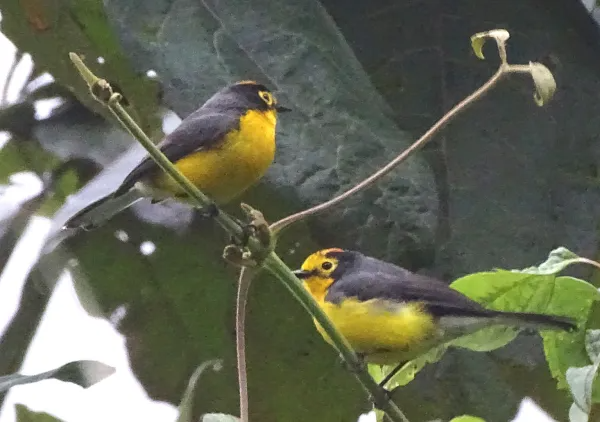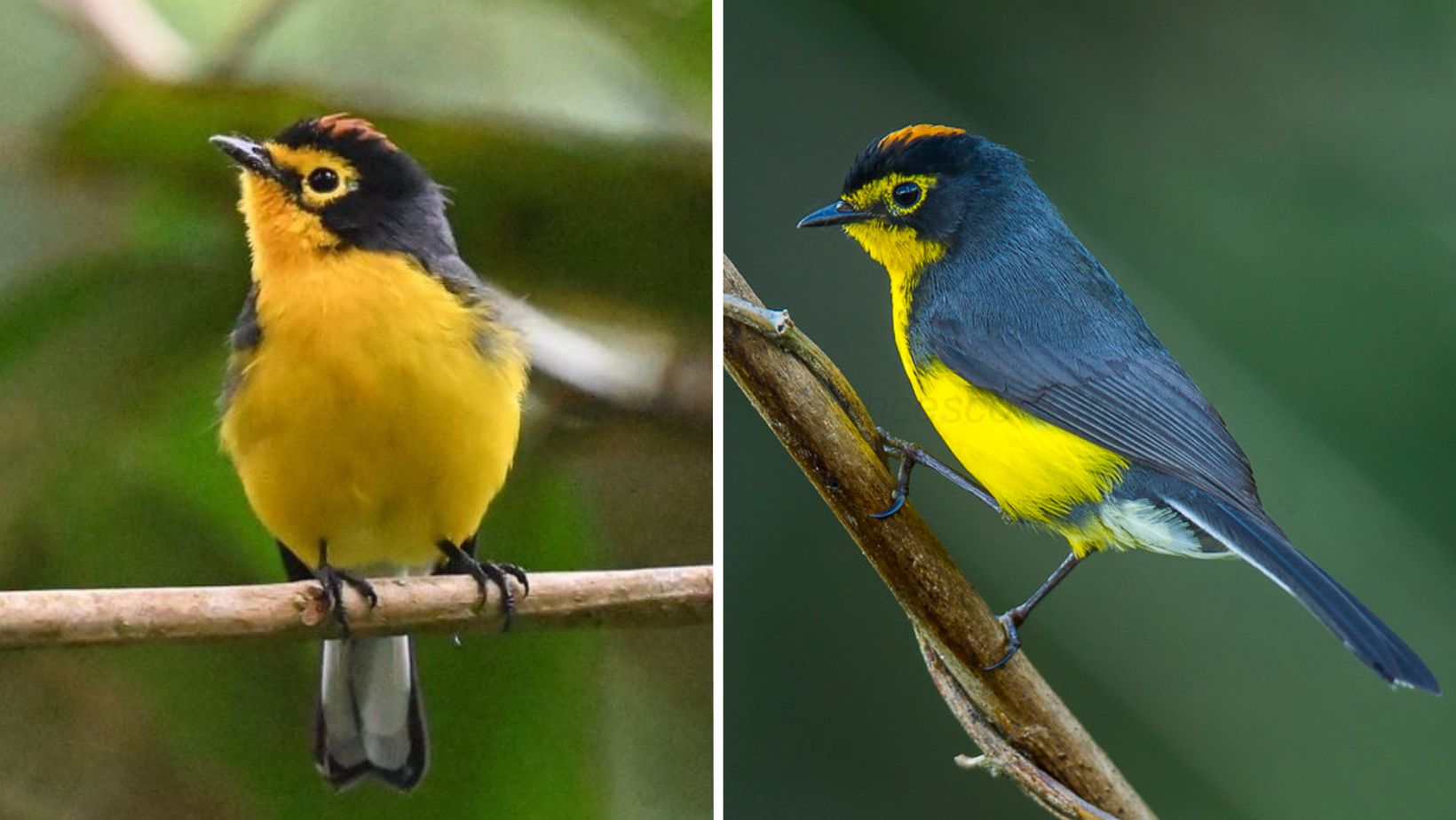
This bird is adorned with slaty-gray upperparts and bright yellow underparts, creating a striking contrast in its plumage. Its most distinctive feature is the bold yellow spectacles encircling its eyes, which give it a captivating and eye-catching appearance.
Meet the Spectacled Whitestart
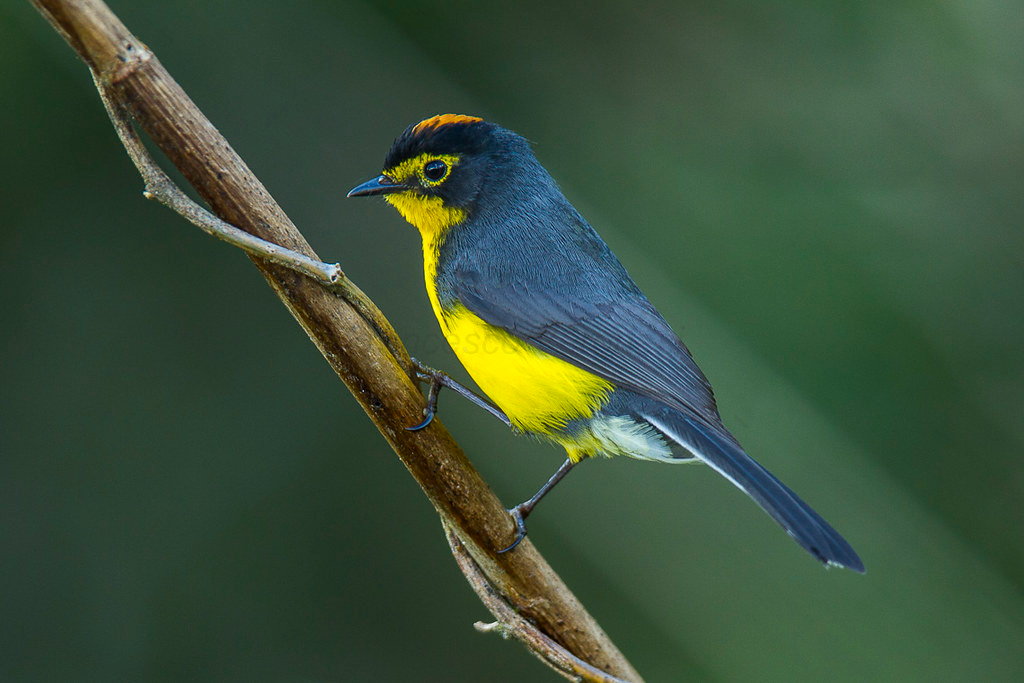
The Spectacled Whitestart, also known as the Spectacled Redstart (Myioborus melanocephalus), measures an average of 13.5 cm in length, this bird sports a gray upper body and a vibrant yellow underbody. The defining feature of the face is the presence of striking yellow “spectacles” around the eyes, which remains consistent among all subspecies. However, there are distinct variations in the face pattern between different subspecies. The northern subspecies, found in Ecuador and Colombia, boast a rufous reddish-brown crown, while the southern ones in Peru and Bolivia display a black crown.
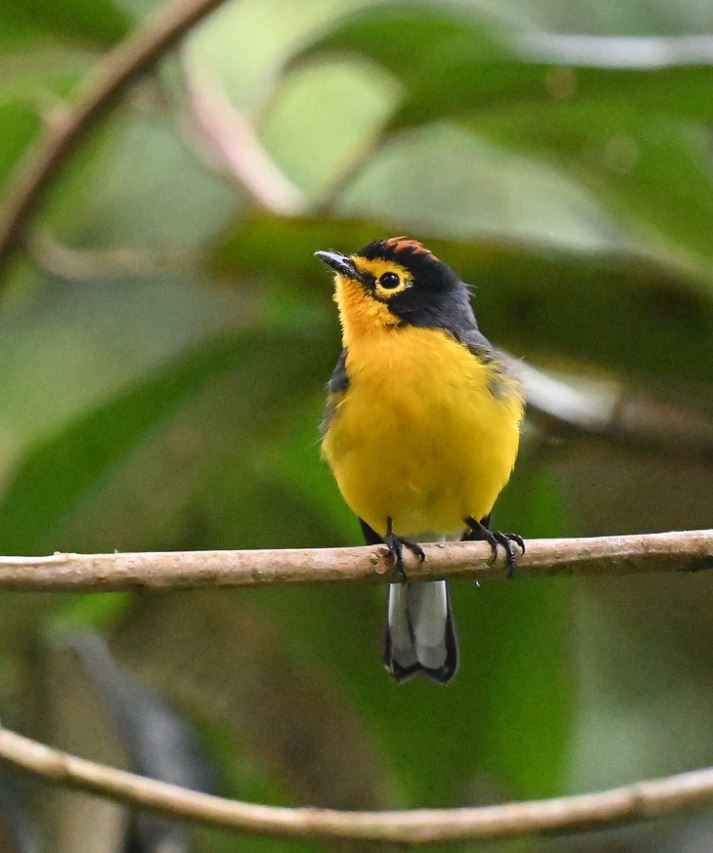
The male and female Spectacled Whitestarts are indistinguishable in appearance. However, when it comes to juveniles, they can be identified by certain characteristics.
Juvenile Spectacled Whitestarts have a grey coloration on their head and back, which differentiates them from adults. Additionally, their underparts are a paler shade of yellow compared to the bright yellow seen in the adults.
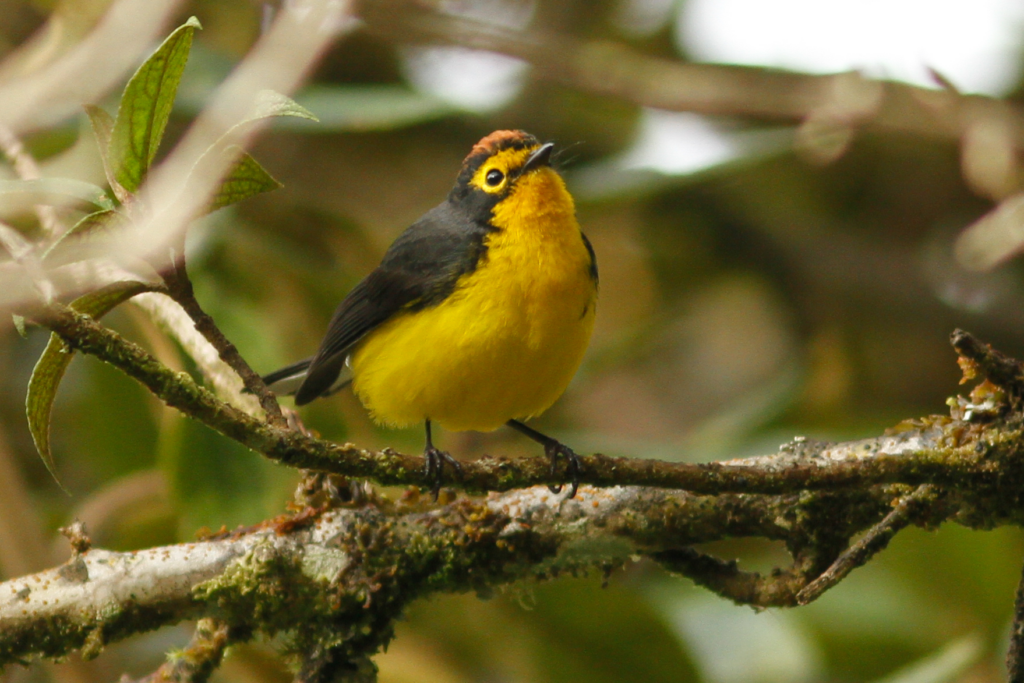
This bird belongs to the Parulidae family found in the Andean region of South America, ranging from southern Colombia to Bolivia.
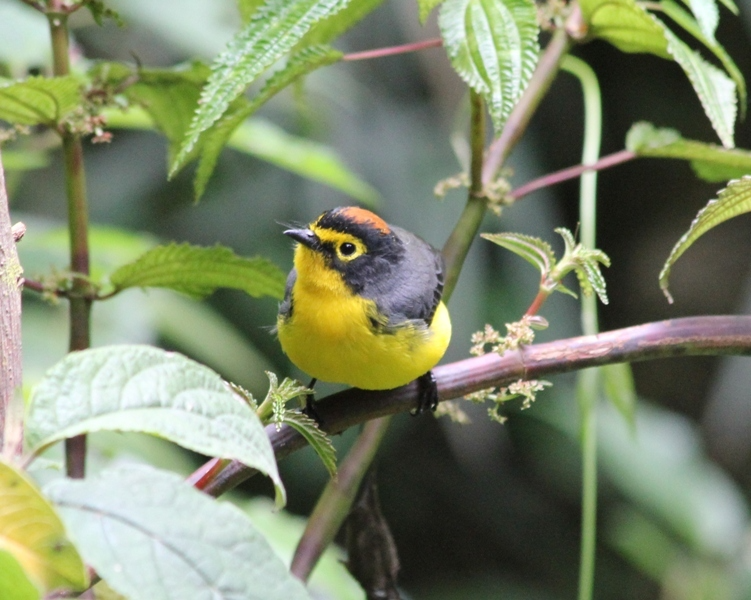
The Spectacled Whitestart inhabits the humid montane forests and forest edges of the Andean region, thriving at elevations ranging from 2,000 to 4,000 meters.
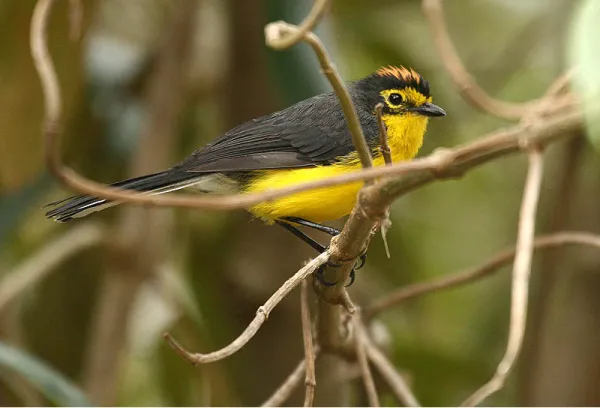
They often sallie for arthropods to foliage and air, including aerial chases after escaping insects; hops along branches wagging their tail from side to side; often fans tail, flashing white outer rectrices. Highly vocal almost year-round.

The Spectacled Whitestart builds a dome-shaped nest, typically placed on or near the ground. These nests are primarily made of leaves and moss, providing a sturdy and secure foundation. The inner lining of the nest consists of softer materials, such as seed down and tree-fern scales, ensuring a comfortable environment for the eggs and young birds. The female lays a complete clutch of two eggs, which are laid on consecutive days. Once the nest building is completed, it takes approximately 12 to 18 days. During the incubation period, which lasts for about 15 days, the parent(s) diligently keep the eggs warm and protected. After the eggs hatch, the nestlings spend about 12 days in the nest before they are ready to fledge.
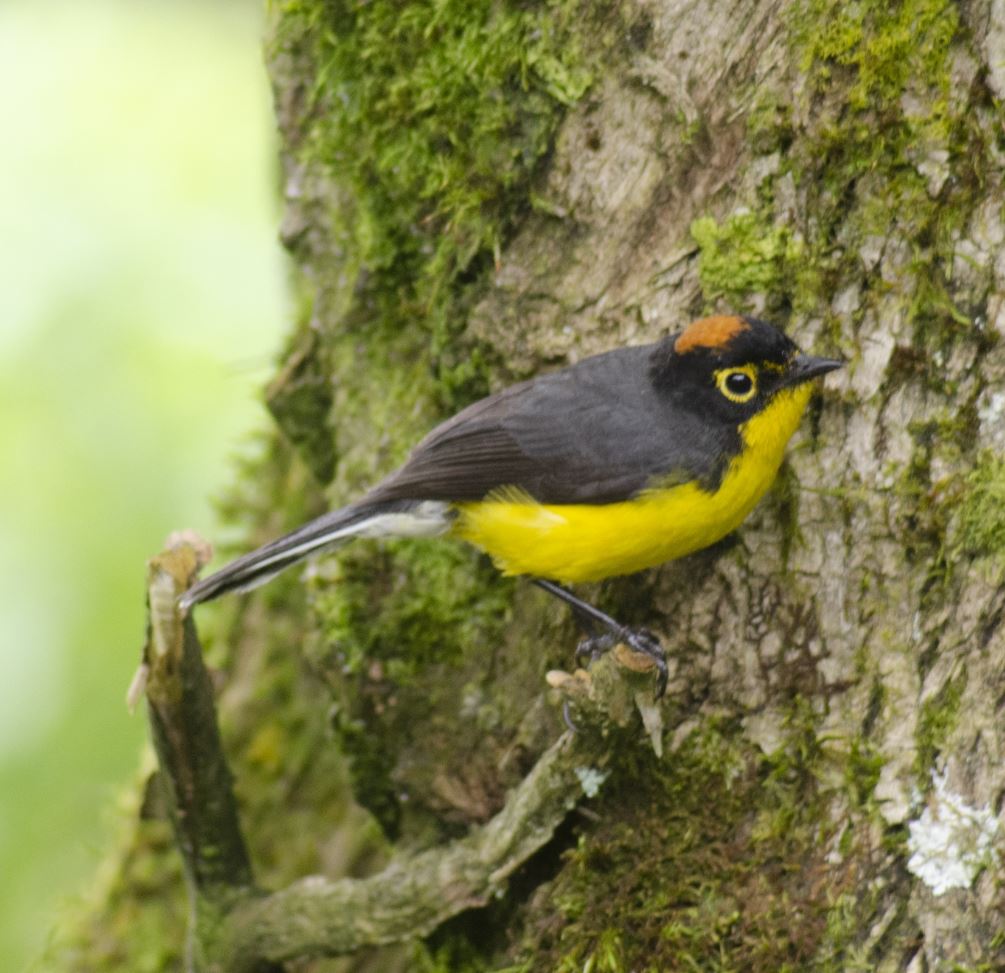
This bird is regarded as of Least Concern on the IUCN Red List.
